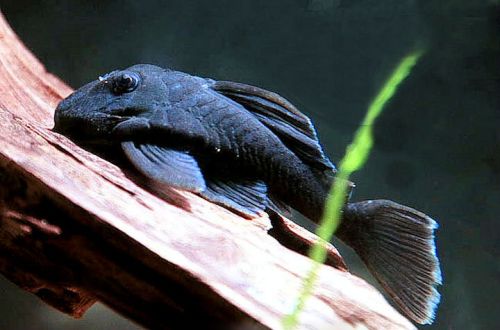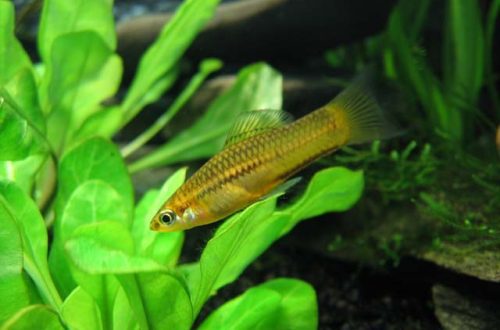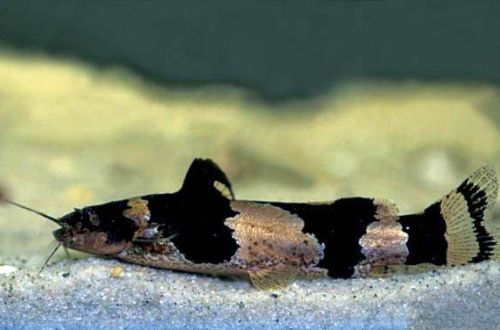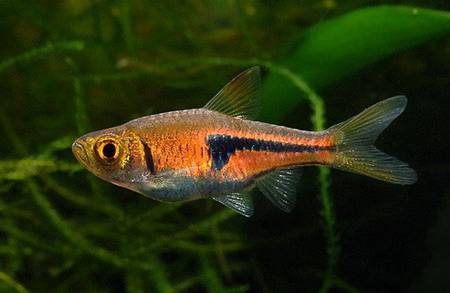
Analysis of espey
Rasbora espei or False rasbora harlequin, scientific name Trigonostigma espei, belongs to the Cyprinidae family. Beautiful and miniature schooling fish from the overgrown channels of tropical forests. Separated into a separate species relatively recently, in the second half of the 20th century. It is distinguished by endurance and unpretentiousness, provided that the water has the necessary parameters. May be recommended for beginner aquarists.

This species is often confused with related rasboras such as ‘Rasbora hengel’ and ‘Rasbora harlequin’ due to their similar appearance. In most cases, in pet stores, all three species are sold under the same name, and amateur sites dedicated to aquarium fish are full of numerous errors in the description and accompanying images.
Requirements and conditions:
- The volume of the aquarium – from 40 liters.
- Temperature – 23-26°C
- Value pH — 6.0–6.5
- Water hardness – soft (5–12 dH)
- Substrate type – any dark
- Lighting – subdued
- Brackish water – no
- Water movement – weak or still water
- Size – up to 3 cm.
- Feeding – any food of suitable size
- Life expectancy – from 3 to 5 years
Contents
Habitat
False rasbora harlequin was described in 1967, distributed in Southeast Asia along the entire eastern coast of the Gulf of Thailand in the countries of Cambodia and Thailand, and also recently discovered on the island of Phu Quoc, Vietnam.
In nature, fish lives in dense thickets of aquatic plants in calm rivers, ponds and swamps. In such reservoirs, the water is often yellowish due to the decomposition of plant residues with a high content of tannins. Fish live in schools, feeding on small insects, worms, crustaceans and zooplankton.
Description
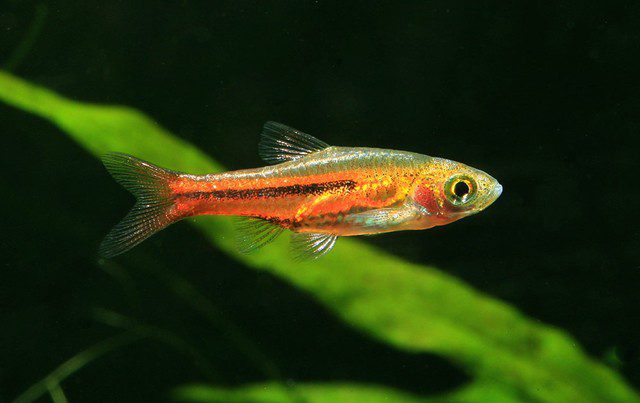
Rasbora espes is a small, slender fish that reaches no more than 3 cm in length. The predominant color is copper-orange with a pink tint, the belly is silvery. Depending on the region of origin, the color may be more red. A distinctive feature is black pigmentation, which in its widest part begins approximately in the middle of the body and stretches to the tail.
Food
In the aquarium, the diet is recommended to be formed from high-quality dry flakes and granules intended for this species. It is possible to diversify the diet with live food (daphnia, brine shrimp, small bloodworms) and herbal supplements.
Maintenance and care
Caring for the fish is easy, as their natural habitat often looks like a rather neglected yellow water tank. However, it is not worth allowing such a state of water, unlike nature, the reservoir is limited and pathogenic microorganisms can develop under such conditions. The water should be soft and slightly acidic, which should be renewed by half once a month. A powerful filtration system is not required, a simple filter with a sponge as a filter material is sufficient.
Fish prefer the upper and middle layers of water, so the bottom can be planted with deciduous plants, dense thickets of which should be placed along the side walls of the aquarium. The presence of floating plants will provide the fish with a sense of security, as well as dim the lighting. Dark soil helps to increase the brightness of color in fish, its composition does not matter, the main thing is that there are no sharp edges on stones and other design. Bog wood is recommended, thanks to it tannins get into the water and the composition of the water becomes as close as possible to natural conditions.
Social behavior
Peaceful schooling fish, keeping at least eight individuals in a group is a prerequisite, despite the fact that they can swim alone in an aquarium. Intraspecific competition does not lead to skirmishes and injuries, but is manifested only in the coloration of males, which becomes brighter in order to attract the attention of females. Fish are perfectly combined with other peaceful and small fish, however, they can cause inconvenience to slow neighbors with their activity.
Sexual differences
Adult males are brighter than females and have a more pronounced dark wedge-shaped stripe on the body. Females have a taller body and a rounded belly.
Breeding / breeding
Rasbora espey for breeding requires a separate tank, which is primarily designed to protect against parents who are not averse to feasting on fry and caviar. The spawning tank should be provided with low lighting, a low water level of no more than 20 cm with low pH values, and plants with broad leaves should be planted. From the equipment: aerator, heater (set the temperature at 28 ° C), the filter is the simplest with a sponge as a filter material.
Place one or two pairs in a spawning tank, high temperatures will signal spawning. The male, after performing the mating dance, fertilizes the eggs, which the female attaches to the leaves of plants. The parents are no longer required and should be transplanted back. In a spawning aquarium, the water level should be lowered to 10-15 cm, make sure that the eggs are below the water level, and dim the lights. Lighting from the room where the aquarium is located will be enough.
The fry appear in about a day, and begin to swim freely after 7-14 days, depending on the environmental conditions. You can feed the fry with special microfeed supplied to pet stores.
Diseases
This species, under favorable conditions, is resistant to most diseases of tropical fish; if conditions worsen, immunity may weaken, and the fish will become susceptible to infection. Read more about symptoms and treatments in the Fish Diseases section.
Features
- small fish sizes
- Can jump out of the aquarium
- Flock keeping at least 8 individuals



